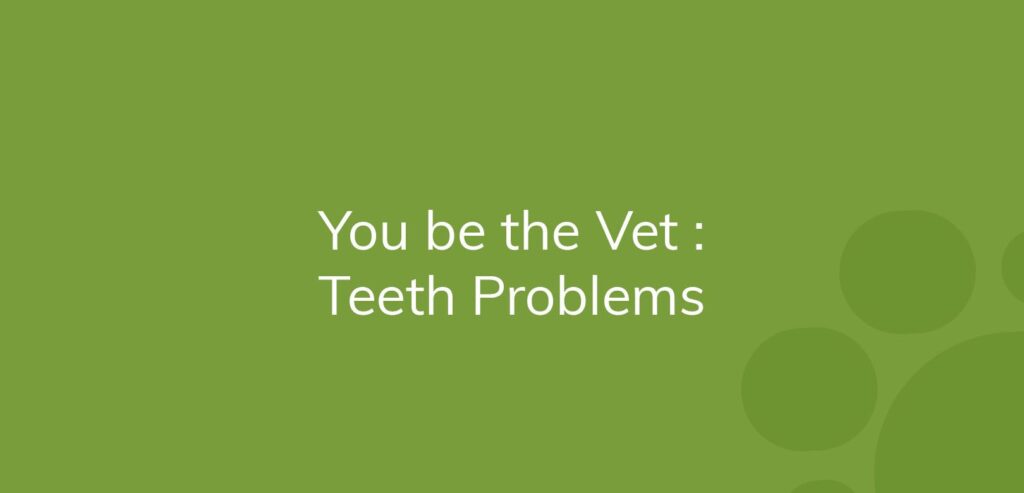It’s no fun having gum disease or raw exposed nerves … or breath so bad it wilts the plants.
Did you know 9/10 pets will have evidence of dental disease by the age of four? You can check your pet’s mouth for signs of dental disease at home.
I’ll walk you through how to do it!
Step 1 This works best when your pet is calm and comfortable. Have your pet lie down on their bed, on your lap, or where ever they feel relaxed and you can sit or stand next to them. Can you smell your pet’s breath from where you are? If it smells like something has crawled in there and died, this is a strong indication that your pet has dental disease! Let’s investigate further!
Step 2 Place one hand over the top of your pet’s mouth and the other hand underneath, as you can see in this picture. Using your thumbs, lift your pet’s gums so that you can see their teeth. You may need to do this once near the front of their mouth, and again near the back of their mouth so that you can look at all of their teeth.
Step 3 Can you see any calculus? That’s the name of the yellow, brown, or black gunk that sits on top of the teeth. This is where bacteria have attached to your pet’s teeth and built a fortress around themselves. This calculus fortress is very difficult to remove using home care alone (tooth brushing, dental diets and mouthwash), and so bacteria are able to live in there comfortably, multiplying and causing infection in your pet’s mouth. Calculus is often the most obvious sign of disease when looking at the teeth.
Step 4 Now let’s have a look at the gums themselves. Can you see a thin line of red on the gums just next to the teeth? This means that there is bacteria and plaque (the first step to calculi formation) is building up underneath the gums, causing irritation, infection and pain. If the disease has progressed further, you may notice that the gums are swollen, and bleed easily. If the disease is very severe, the gum may start to disappear, and you may be able to see parts of the tooth that should normally be covered by gums and bone!
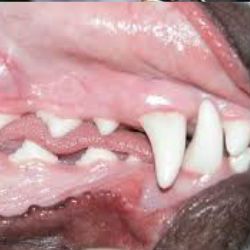 Photos :a)Normal Dog Teeth
Photos :a)Normal Dog Teeth
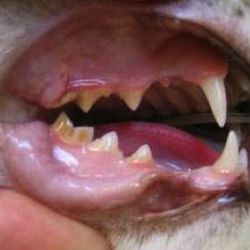 (b)Moderate gingivitis and tartar in cat
(b)Moderate gingivitis and tartar in cat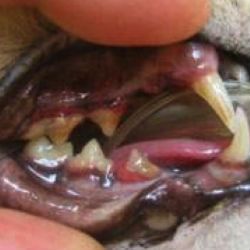 (c)severe dental disease in cat requiring teeth extractions
(c)severe dental disease in cat requiring teeth extractions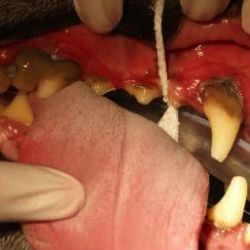 (d) severe dental disease in dog requiring extractions
(d) severe dental disease in dog requiring extractions
Step 5
Make the decision
So does your pet have any signs of dental disease?
If not, congratulations, you’re doing a great job! It’s important to continue brushing your pet’s teeth, feeding them a dental diet and making sure they have mouth wash in their water to keep those teeth shiny clean, healthy and pain-free.
If you have found dental disease in your pet’s mouth, then it is important to act quickly. Early intervention reduces the risk of permanent damage and risks to your pet’s health . Just like us , looking after your teeth is a combination of good home care and the annual visit to the dentist for a descale and polish. Take advantage of our free dental health assessments and book one today.



